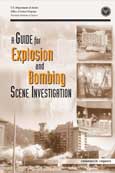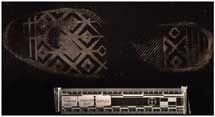|
View in browser: http://www.crime-scene-investigator.net/newsletter/0618.html
|
||
|
JUNE 2018 | ||
| ||
|
This Month's Featured Resource on the Crime Scene Investigator Network Website
|
||

The principal purpose of this Guide is to provide an investigative outline of the tasks that should be considered at every explosion scene. They will ensure that proper procedures are used to locate, identify, collect, and preserve valuable evidence so that it can be examined to produce the most useful and effective information-best practices. This Guide was designed to apply to explosion and bombing scene investigations, from highly complex and visible cases, such as the bombing of the Alfred P. Murrah Federal Building in Oklahoma City, to those that attract less attention and fewer resources but may be just as complex for the investigator. |
||
|
New CSI and Forensic Job Announcements
|
||
|
The most comprehensive listing of Crime Scene Investigation and Forensic To be notified of job openings as they are posted, follow us on Twitter: Job Posting Alerts |
||
|
Forensic Analyst
Eugene Police Department, Eugene, Oregon, USA Final Filing Date: June 29, 2018 Responds to crime scenes and autopsies, as they occur, to perform and/or oversee searching for, collecting, preserving, packaging and inventorying of evidence, including various body fluids, tool marks, ballistic evidence, and drug laboratory chemicals, weapons, clothing, trace evidence, footwear, tire impressions, latent prints, and other related materials. <View complete job listing> |
||
|
Crime Scene Specialist
Citrus County Sheriff's Office, Inverness, Florida, USA Final Filing Date: Continuous Investigate and process crimes scenes through observation, photography, documentation, fingerprint development, casting, or by other means as necessary; Develop, collect, transport, and secure evidence or other property from criminal cases adhering to chain of custody and control measures; Maintain records for proper storage and disposition of evidence; Testify in court related proceedings; <View complete job listing> |
||
|
Forensic Scientist II - Firearms
Minneapolis Police Department, Minneapolis, Minnesota, USA Final Filing Date: June 26, 2018 Handle, search, and evaluate the significance of physical evidence. Conduct necessary examinations and comparisons of physical evidence to include: firearms, bullets, cartridges, discharged cartridge casings and other related weapon components and ensure all findings are correctly documented. <View complete job listing> |
||
 |
||
|
Toxicologist
Broward County Office of Medical Examiner and Trauma Services, Fort Lauderdale, Florida, USA Final Filing Date: Continuous The purpose of this class within the organization is to analyze body fluids and tissues to identify and quantify drugs and toxins in the subject's system. <View complete job listing> |
||
|
Digital Forensic Analyst
Lincoln County District Attorney's Office, Newport, Oregon, USA Final Filing Date: May 31, 2018 Conducts forensic analysis of computers and other digital/data storage devices such as smart phones, tablets, storage devices/drives, and cloud computing systems and applications. <View complete job listing> |
||
|
Fingerprint Technician
St. Louis Metropolitan Police Department, St. Louis, Missouri, USA Final Filing Date: Applications will be accepted until a sufficient number are received. Classifies searches and compares fingerprints of arrested and potential suspect subjects or job applicants to determine if they have a criminal record and are who they purport to be. Uses state and national AFIS systems to establish prisoner's true identity. Uses MULES and REJIS name checks to assist in determining prisoner's true identity. Fingerprints unconscious or deceased subjects to establish identity. <View complete job listing> |
||
|
Search for more job listings in Crime Scene Investigations and Forensics To be notified of job openings as they are posted, follow us on Twitter: Job Posting Alerts |
||
|
Other Resources on the Crime Scene Investigator Network Website
|
||
|
Crime Scene Investigator mdash; Blog
Crime Scene Investigator Forum How to Become a Crime Scene Investigator Crime Scene Response Evidence Collection Crime Scene and Evidence Photography Crime Scene Investigation Articles Video Presentations College and University Programs Employment Resources and Links |
||
|
Not Subscribed to this Newsletter?
|
||
|
If you are not subscribed to this newsletter, you may subscribe with this link: SUBSCRIBE via email |
||
|
To Unsubscribe
|
||
|
To unsubscribe from future e-mail newsletters, please click here: UNSUBSCRIBE Copyright ©2018 Crime Scene Resources, Inc. Crime Scene Investigator Network |



